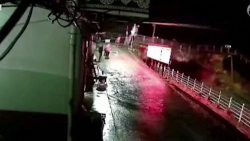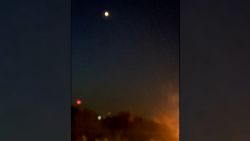A volcano in the far eastern corner of Russia that was previously considered extinct may be waking up – and an eruption could be catastrophic.
The Bolshaya Udina volcano – part of the Kamchatka Peninsula’s Udina volcanic complex – was believed to be extinct until 2017, when increasing seismic activity was detected beneath it, scientists say.
Now, Ivan Koulakov, a geophysicist from Russia’s A.A. Trofimuk Institute of Petroleum Geology and Geophysics who led a study into the volcano, believes it should be reclassified as active.
“At any moment, an eruption can occur,” Koulakov told CNN.
Between 1999 and September 2017, about 100 weak seismic events were detected beneath the volcano, which stands at 9,590 feet above sea level. An “anomalous increase” in seismicity, however, began in October 2017. Between October 2017 and February 2019, about 2,400 seismic events were recorded.
February saw an earthquake of 4.3 magnitude occur under Udina – the strongest seismic event ever to occur in the area.
Researchers from Russia, Egypt and Saudi Arabia conducted a study of the volcano last year between May and July, which was published in the Journal of Volcanology and Geothermal Research.
Installing four temporary seismic monitoring stations around Bolshaya Udina, the researchers recorded and analyzed 559 seismic events. An “elliptical cluster” of seismic activity had formed around the volcano, they determined, with seismic events taking place more than three miles beneath the surface.
“These seismic properties may indicate the presence of magma intrusions with a high content of […] fluids, which may justify changing the current status of this volcano from ‘extinct’ to ‘active,’” the researchers wrote.
Moreover, they observed that the cluster of seismic events connected the volcano with the Tolud zone, to the south of the volcano, a region believed to store magma in the Earth’s lower crust. The Tolud zone was now feeding Bolshaya Udina with magma, they concluded, thanks to a new pathway that developed in 2018.
Bolshaya Udina shares structural characteristics with another formerly extinct volcano in the region, the Bezymianny, which erupted dramatically in 1956, Koulakov told CNN.
There is around a 50% chance that Bolshaya Udina will erupt, he said.
“Or it could just release the energy smoothly over a few months, or it may just disappear without any eruption,” he said.
If the volcano does erupt, it could pose a significant threat to the small villages nearby, he said, though he added: “There are not many people around.”
A sizable eruption could also affect the climate in “completely different parts of the world,” he said. Ash released by the eruption could spread beyond Russia, disrupting air travel.
Unfortunately, the volcano is difficult to monitor, thanks to its distance from permanent seismic stations, Koulakov said.
“We need to deploy more stations to understand if it’s dangerous or not,” he said. “It’s highly unpredictable.”






















